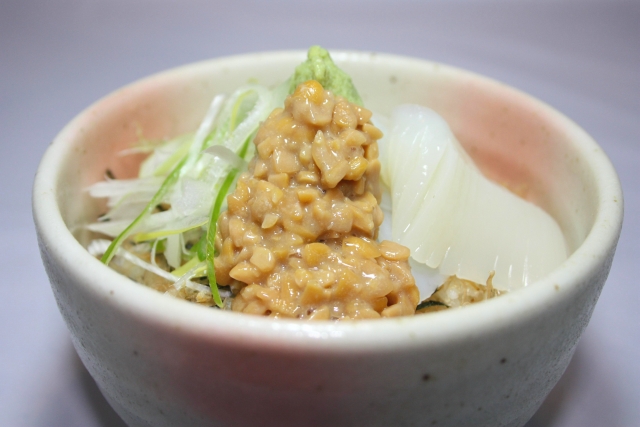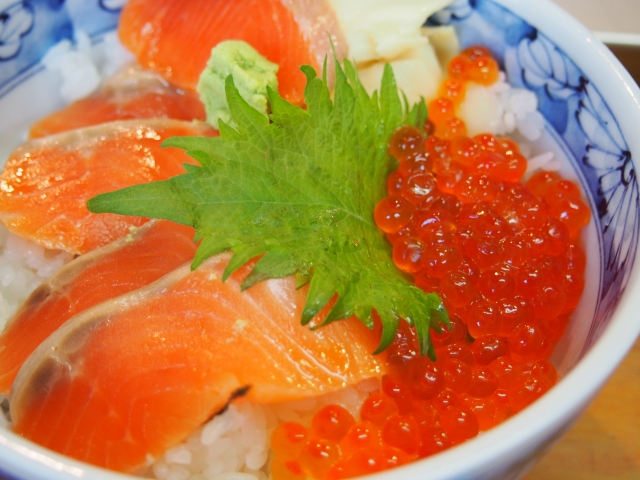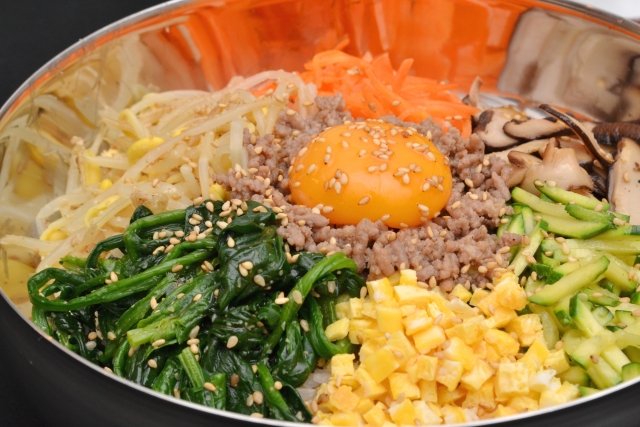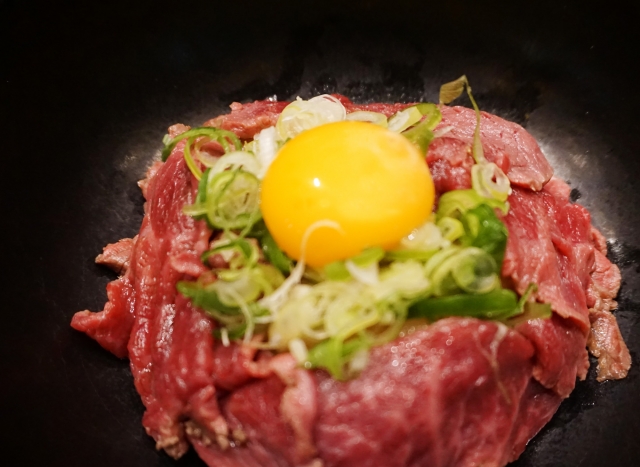Donburi – Microcosm of Japanese Cuisine in a Bowl (part 2)
In our last article we have looked into the popular culinary culture of donburi, a tasty one-bowl dish that is ideal for a hurry-up meal. We also looked into the well liked, traditional donburi toppings.
Today we see a huge diversity of donburi toppings that depart from traditional Japanese cuisine. In fact, any main and side dish may become a donburi topping by being served on top of a hearty bowlful of steamed rice; so long as it goes well with the rice. Here in this sequel article, we will look at some of the non-conventional range of toppings- from traditional donburi with a twist to fusion alternatives.
‘Nebaneba’ Toppings
With the likes of natto (fermented soy beans), tororo (grated yam), okra and mekabu (thick wakame seaweed), the Japanese have traditionally added sticky foods to their diet. The nutrients of nebaneba (meaning sticky or slimy in Japanese) vegetables are diverse, yet each of them has its own benefits such as preventing intestinal disorders, bad odors, dry skin, constipation, high blood pressure, and chronic diseases. This is why a bowl full of nebaneba toppings called ‘nebaneba-don’ is well regarded as a healthy popular meal.
Throwing in some raw slices of seafood like chunky maguro pieces and squid sashimi into a nebaneba-don is called ‘bakudan-don’, which literally translates as a donburi of explosive device. The reason for such bizarre naming is unknown, except for the fact that a sushi roll with a variety of ingredients rolled with black nori seaweed is called bakudan-maki, hence its donburi version also bears the same term.
Seafood Oyako-don
Since the traditional oyako-don is cooked with chicken pieces and eggs, consider a donburi dish with toppings of either cooked or uncooked salmon and ikura (salmon roe) as its seafood version.
Donburi with Avocadoes
Creamy texture of avocadoes goes nicely with rice and has become one of the well-received topping in recent years. Slices of avocado come normally alongside with either meat or fish toppings such as cooked and well seasoned minced meat, cooked or uncooked ham, and cooked, uncooked or cured salmon.


Chinese
Chinese (but probably with a Japanese influence) is one of the most common cuisines across the nation. This is why it is not surprising to find Chinese-inspired donburi dishes.
A classic chuuka-don, which translates directly as ‘Chinese bowl’, is topped with stir-fried meat, seafood and vegetables. The ingredients are then simmered in a tasty sauce thickened with potato starch. This stir-fry may not be a typical Chinese dish but the soy sauce and oyster sauce-based seasoning makes it delicious, while a colorful assortment of ingredients makes the bowl nutritious.
Mabo-don is another influence hailing from China. It is topped with a popular spicy Szechuan dish called mabodofu, which is cooked using bean curd (tofu) and minced beef. For those who are fans of eggplants, you’re in luck as there is a version of this dish that substitutes tofu with eggplants called mabonasu-don. Whatever your preference, both dishes are equally inviting.
Shark fins (fukahire) are controversial ingredients that get big thumbs down from the environmentalists but they are regarded as precious in Chinese culinary culture and served on special occasions. There are restaurants serving stewed shark fins on a large bowl of rice, the dish of which is called fukahire-don. Not only its rarity but the chewy, stringy texture of the delicately cooked shark fin is guaranteed to make you feel so right but so wrong at the same time as you tuck in to this exorbitant donburi.

Korean
Another neighboring country Korea offers tasty dishes packed with flavor. Warm rice served in a piping hot stone bowl with toppings of sautéed vegetables and beef is a donburi-like dish called bibimbap . It is a vibrant dish typically with five different colored ingredients. The distinctive five colors are red, green, yellow, black and white. Not only it is visually appealing but the bowl makes a balanced, nutritious meal.
There is also a popular, spicy grilled dish with marinated beef named bulgogi that works wonders when served on a bowl of rice. The marinating sauce typically consists of soy sauce, garlic, onion, ginger, sugar and some grated fruits to make the meat tender. A traditional Korean condiment called gochujang is also added to enhance the spiciness and flavor.
Western Alternatives
Recently there has been so much hype over roasted beef donburi especially among the younger generations. A mountain of thinly sliced, rare cooked beef is lavishly placed on top of the rice. Finished with grated horseradish and gravy-like seasoning, it is a must-eat if you get the chance to.
If you are a lover of both beef steak and French fois gras, there is such a thing as a debauched donburi of grilled steak and fois gras- a dish not for the faint-hearted carnivore.
Whether the topping is common or not, the culinary culture of donburi demonstrates how Japanese and rice are inseparable.

